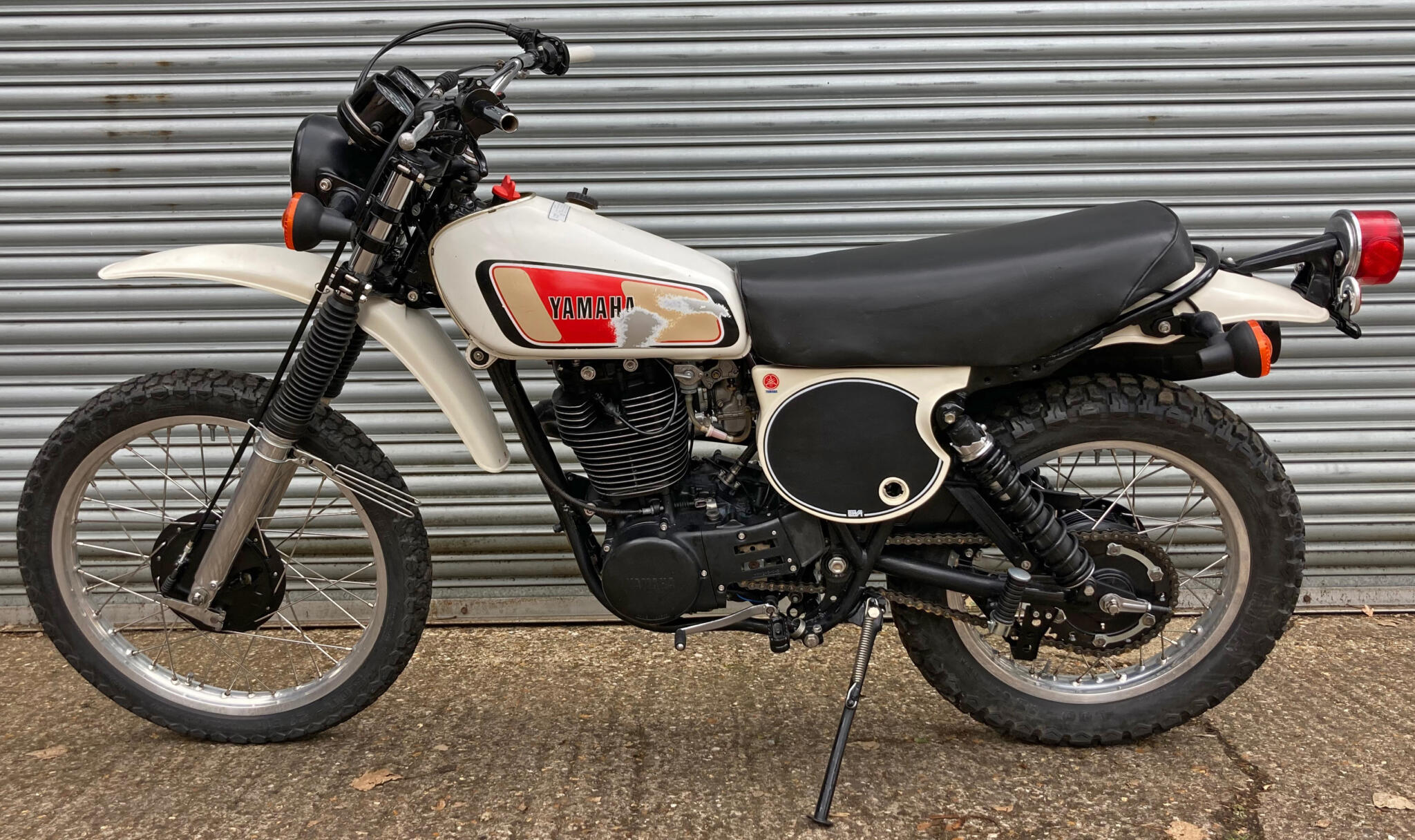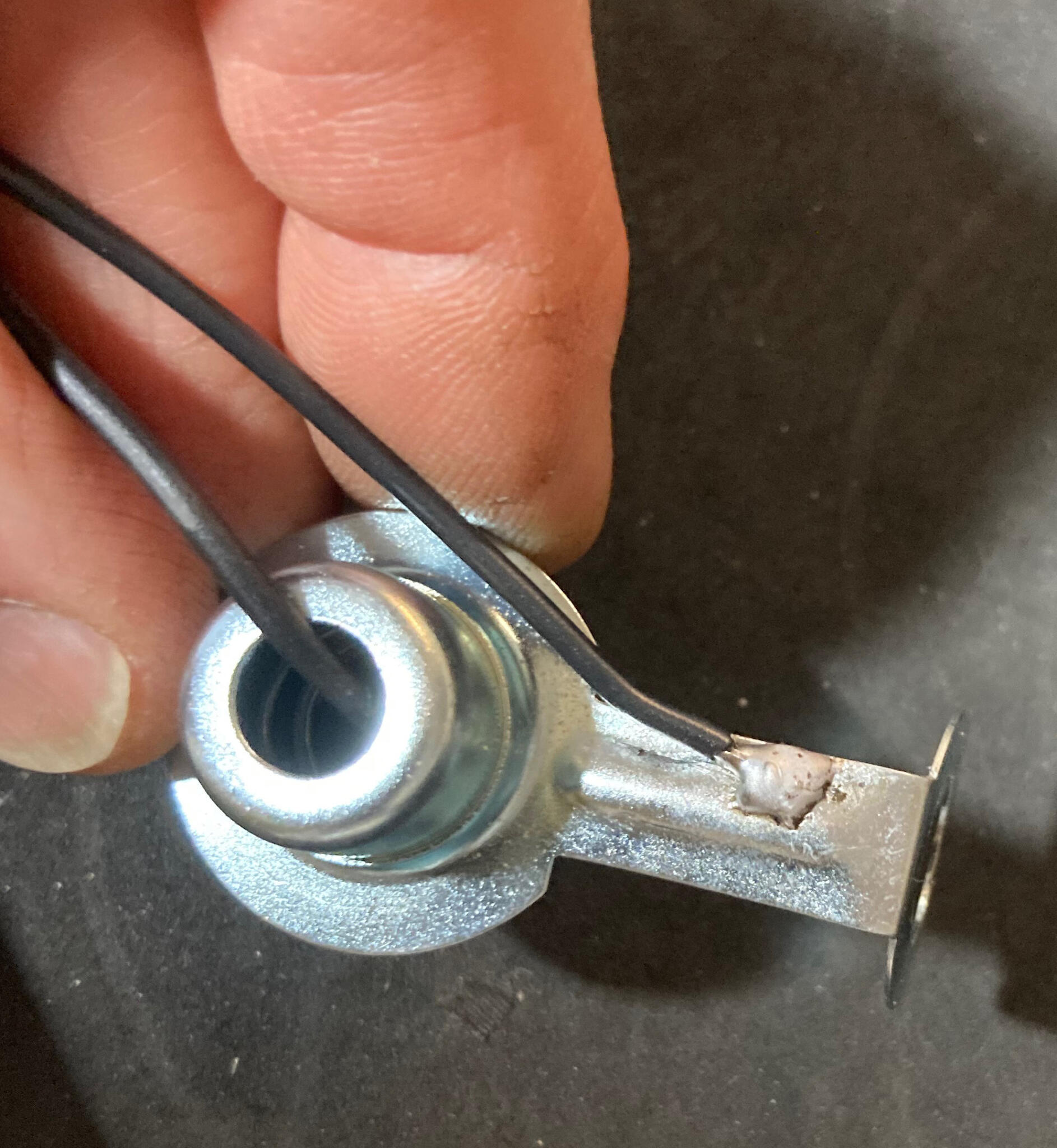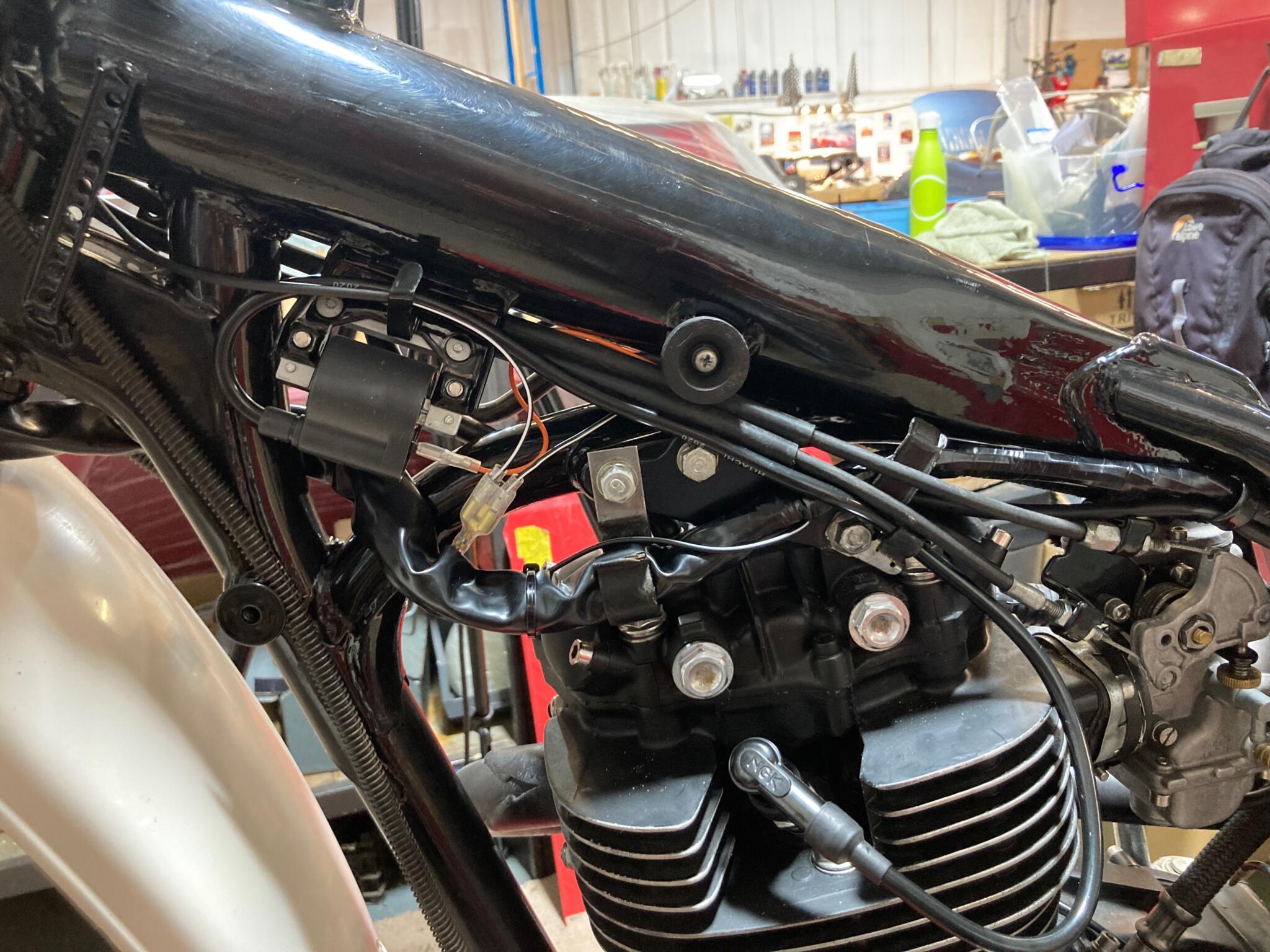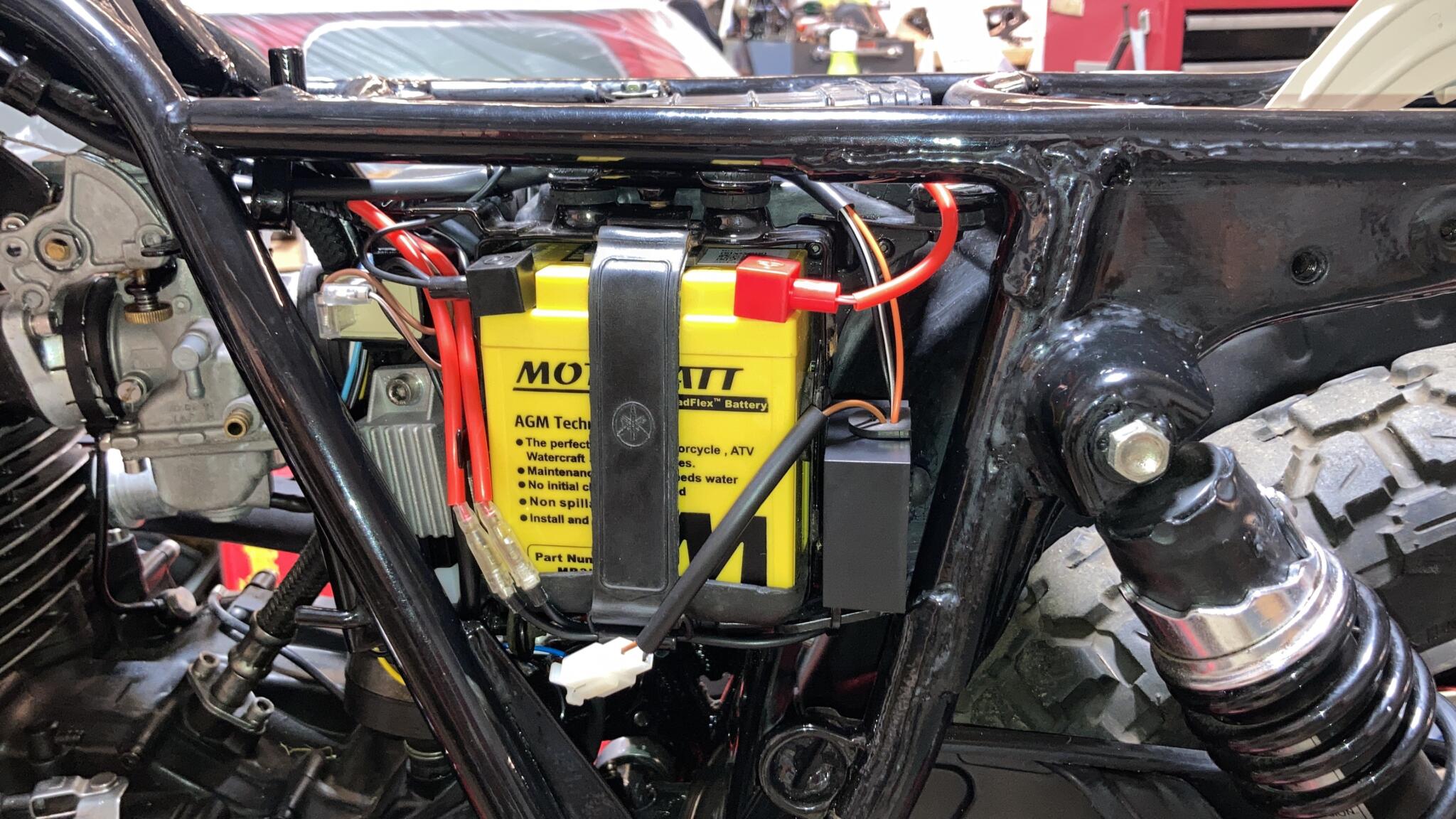Mick’s Yamaha XT500
Mick has had this bike for 15 years, but hardly ever had it running.
Having restored it thoroughly, he brought it along with a box of goodies: a pattern loom by Kedo, and a 12V charging/CDI ignition kit from Rex’s Speedshop. There was also a small collection of handlebar switches.
His brief was wide open: use the pattern loom or not, as I saw fit, plus the best switch clusters. I thought it would be silly to build a new loom, and the Kedo one (from Germany, though possibly made elsewhere) is good quality. The big problem with XT500s is that their charging and light switching systems, and ignition switches, varied. Perhaps it’s because, over time, bikes acquire different parts, but I can’t actually remember doing two XTs the same.
If you can get the flywheel off, fitting a Rex kit is dead easy. You set the timing approximately, then make fine adjustments on the CDI box with a special screwdriver. The Rex plugs go to the standard Yamaha plugs in a logical way, and the instructions are good. As I keep saying, Rex is a good shop! Fitting the loom is a little trickier because it runs in a counter intuitive way, crossing under the top frame tube left to right half way along. Then it slithers between the bottom yoke and the mudguard.
The hardest bit is working out what the lighting and ignition switch you have are actually doing, and making sure they are hooked up the the correct bits of the loom. The only way to do this is to plod through, noting the connections and proving to yourself that the loom is doing what it should do.
The bike fired up first kick!
No it didn’t. That was a lie. It actually refused to start. With great reluctance (because I hate working on carbs and engines) I took the thing apart and found the usual evidence of E10 fuel left to stand in an old bike: white deposits on the jets. A quick’n’dirty clean-up and blast with an airline got the worst of it off – enough to check the engine ran, the charging was OK and the timing was spot on.
Mick agreed to strip and rebuild the carb fully. A couple of weeks later he sent a message: “It pulls like a train!” Great to know.








